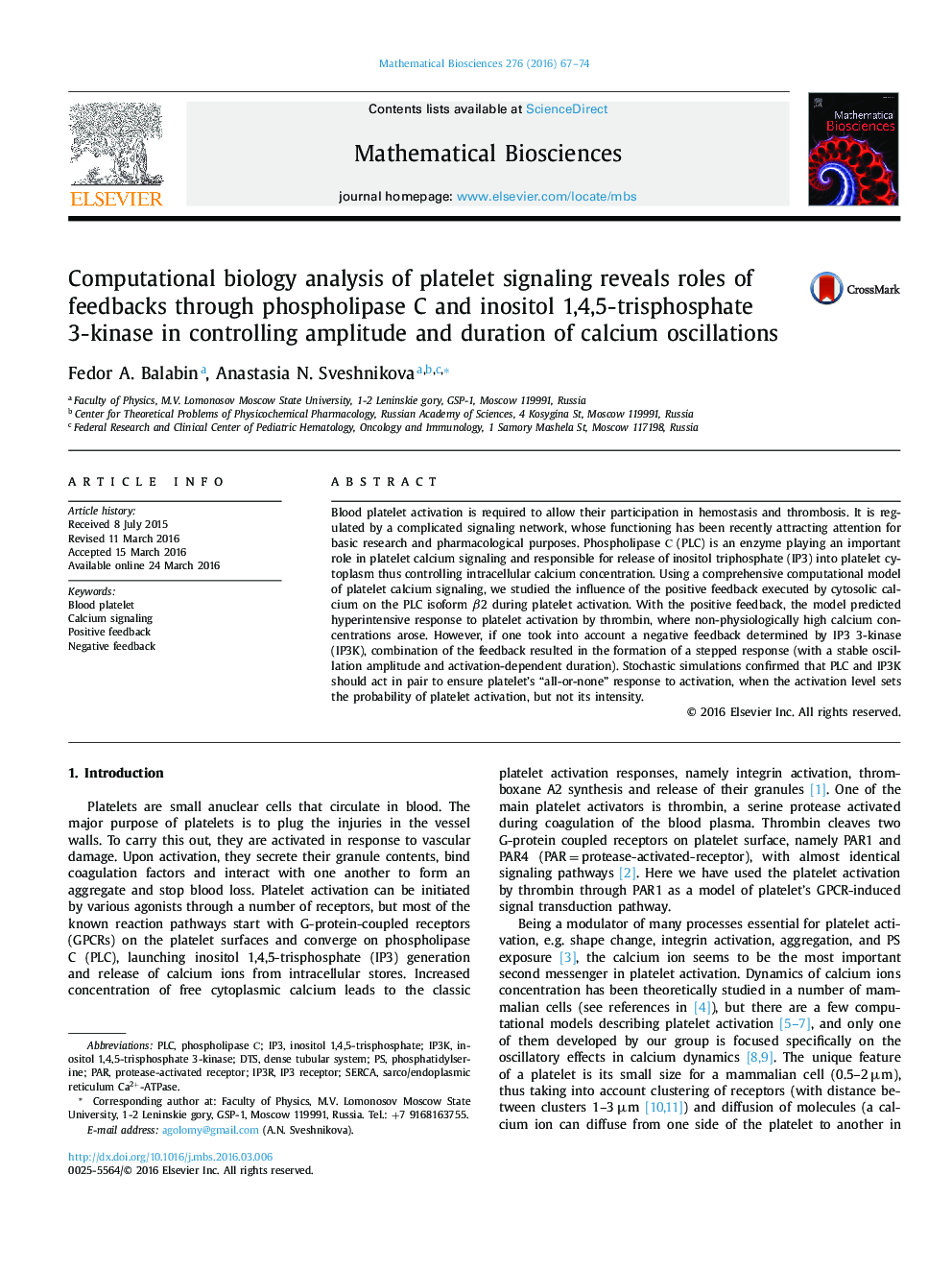| کد مقاله | کد نشریه | سال انتشار | مقاله انگلیسی | نسخه تمام متن |
|---|---|---|---|---|
| 4499839 | 1624004 | 2016 | 8 صفحه PDF | دانلود رایگان |

• Theoretical investigation of PLC and IP3K roles in platelet signaling is performed.
• Positive feedback loop through PLC leads to hyperintensive calcium response.
• Addition of negative feedback through IP3K ensures stepped response to activation.
Blood platelet activation is required to allow their participation in hemostasis and thrombosis. It is regulated by a complicated signaling network, whose functioning has been recently attracting attention for basic research and pharmacological purposes. Phospholipase С (PLC) is an enzyme playing an important role in platelet calcium signaling and responsible for release of inositol triphosphate (IP3) into platelet cytoplasm thus controlling intracellular calcium concentration. Using a comprehensive computational model of platelet calcium signaling, we studied the influence of the positive feedback executed by cytosolic calcium on the PLC isoform β2 during platelet activation. With the positive feedback, the model predicted hyperintensive response to platelet activation by thrombin, where non-physiologically high calcium concentrations arose. However, if one took into account a negative feedback determined by IP3 3-kinase (IP3K), combination of the feedback resulted in the formation of a stepped response (with a stable oscillation amplitude and activation-dependent duration). Stochastic simulations confirmed that PLC and IP3K should act in pair to ensure platelet's “all-or-none” response to activation, when the activation level sets the probability of platelet activation, but not its intensity.
Figure optionsDownload as PowerPoint slide
Journal: Mathematical Biosciences - Volume 276, June 2016, Pages 67–74